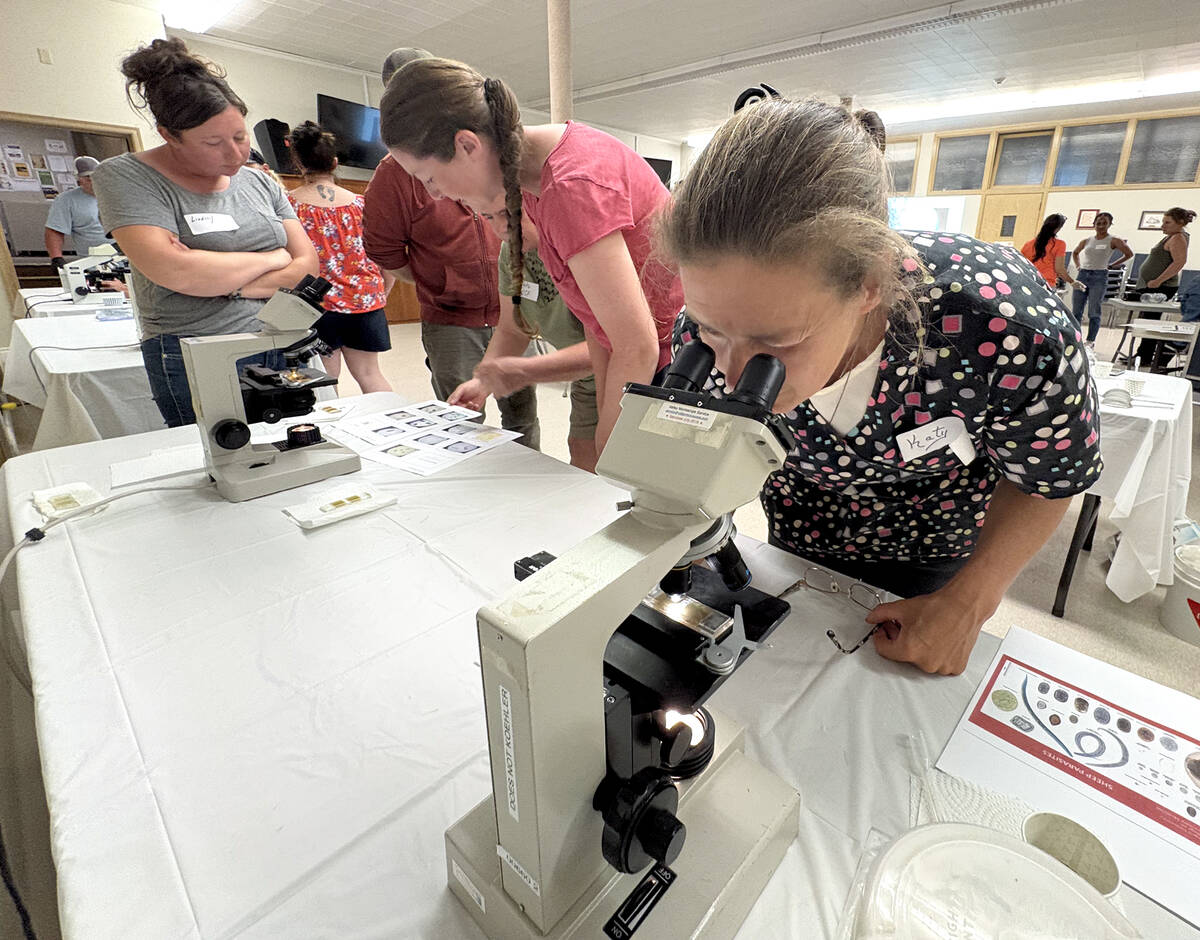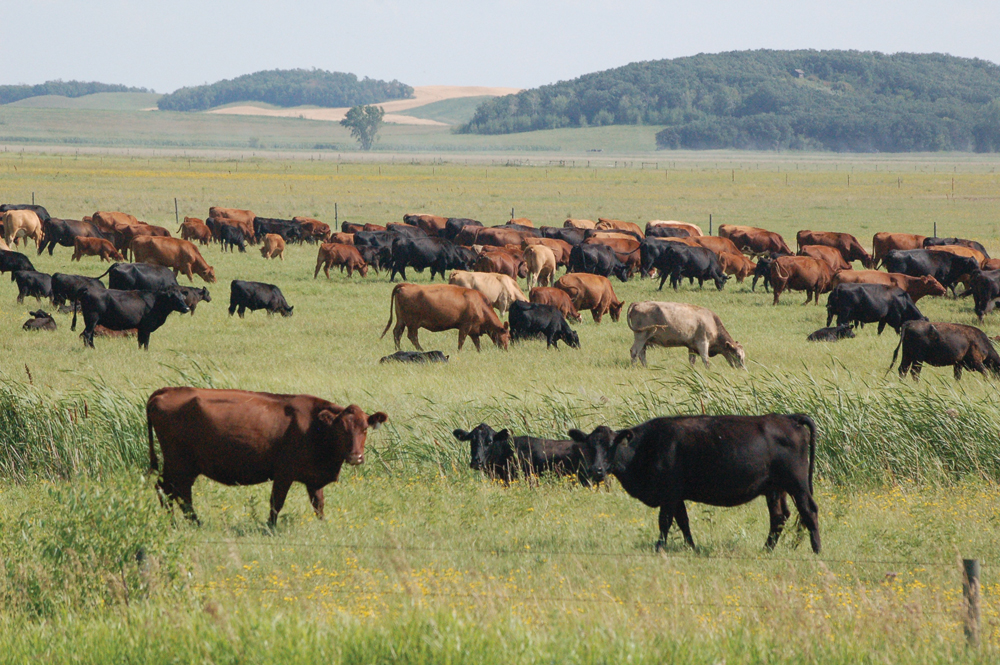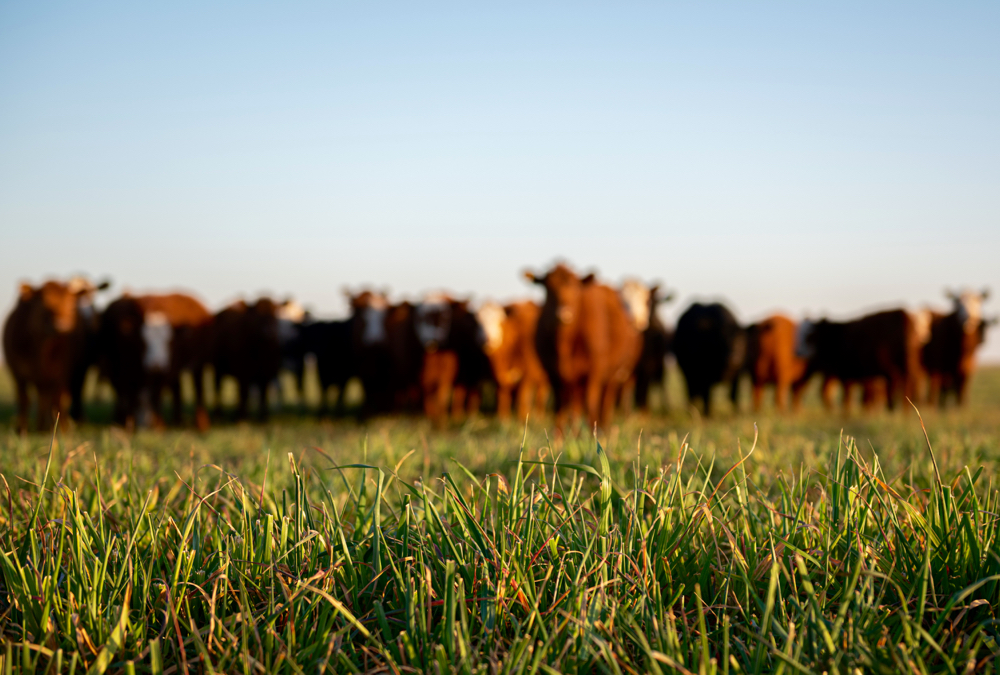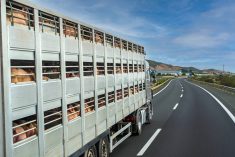Despite current market uncertainty, cattle producers remain reluctant to buy price insurance.
About 10 per cent of calves in Manitoba are insured annually under the Western Livestock Price Insurance Program (WLPIP), said David Van Deynze, vice-president of innovation and product support with MASC.
By comparison, about 90 per cent of annual crop acres are insured.
WLPIP began in Alberta in 2009 and came to Manitoba in 2014. The program has participating producers pay a premium to receive forward price coverage in a select time frame. If in that time frame that market price falls below the coverage level, the producer is paid out.
Read Also

Smart deworming for sheep starts with individual fecal egg counts
Fecal egg count tests are one step to managing dewormer resistance and managing sheep parasites on Canadian sheep farms to maintain flock health.
WLPIP offers calf, feeder and fed cattle policies with varying ranges of coverage. Hog policies are also available, but MASC reports show that none have been purchased in the last five years.
With the onset of the COVID-19 pandemic, markets have become more uncertain. Shutdowns of large processing facilities have caused a backlog of cattle. At the beginning of May, the Canadian Cattlemen Association estimated the backlog was at 100,000 with more being added daily.
Those plants have since largely resumed processing, but other uncertainties — such as the possibility of a second wave of COVID-19 or U.S. President Donald Trump’s musings mid-May on cutting down beef imports into the country — remain.
WLPIP premiums and coverage levels are market based and shift accordingly. Volatility in the markets has increased premiums exactly when some producers seem more interested in buying policies.
Too expensive?
“I think a major cause of what the poor uptake is, especially in this production year, is due to the impacts of COVID-19 and the high premiums associated with some of the coverage,” said Carson Callum, general manager of Manitoba Beef Producers.
Ranchers likely feel that premiums are too high and coverage is too low to be worthwhile, he said.
Tyler Fulton, a cattle producer and director with Manitoba Beef Producers said he considers the program worthwhile but acknowledges that it’s expensive.
“The cost of the program is a very real, legitimate concern,” said Fulton. He told the Co-operator that on a per-head basis, insurance premiums are the second-highest expense he incurs in a year, second only to the costs of winter feeding.

“It’s huge, and it’s a shocker really when you pose this question to some other business owners,” said Fulton, adding that other business owners can’t fathom having insurance as their second-highest expense.
COVID-19 has upped market uncertainty for beef producers, making it a prime year to buy price insurance but after a rough 2019 many ranchers may decide they can’t afford another bill.
Under current prices, producers would be losing money on fed cattle, said Kendra Donnelly, a feedlot owner in Alberta (Alberta prices differ slightly from Manitoba). May 28 coverage prices probably would not break even, and would probably result in a few hundred dollars of loss per head, she said.
There’s also the issue of producers not having cash in hand to pay thousands of dollars up front for the premiums.
As one producer said in a Facebook post, “If the price doesn’t dump totally… all I’ve got is another $22,000 bill and most cowboys can’t handle another bill.”
MASC allows WLPIP buyers to defer payment of premiums until 30 days after the policy expires, said Van Deynze. Deferred payments are subject to interest.
Looking for relief
It’s possible that prices are higher than what the market might dictate, said Iebeling Kaastra, a researcher and consultant who was involved in designing WLPIP. Any tendency by the insurer to price higher than market based is really prevented if they have to both buy and sell the coverage levels, he added.
The model behind WLPIP is complicated and difficult to replicate so it is really hard for producers to know if prices are market based.
“The only way to truly know that is if you allow the industry to both buy and sell the coverage levels,” said Kaastra.
He suggested that the program could be made more flexible by allowing producers to both buy and sell coverage. For instance, a producer could buy coverage and, at the same time, sell a lower coverage level with the same expiration date or the producer could buy coverage and, at a later date, sell the lower coverage level if the market has dropped and volatility has increased and the producer wants to take advantage of these.
“(This) strategy is useful when volatility is high and options are expensive since the overall premium paid is reduced by the option sold,” said Kaastra. “It also allows the producer to better match their risk management needs with the WLPIP purchased.”
Manitoba Beef Producers has also called for the province to subsidize WLPIP premiums similar to how the provincial and federal governments already subsidize crop insurance.
On May 14, the Saskatchewan provincial government announced it would contribute $5 million to offset premium costs under WLPIP as part of COVID-19 relief to the livestock sector. According to a news release, Saskatchewan will provide 40 per cent of the increased premium retroactive to February 25.
During a webinar with beef producers on June 2, Callum said the Manitoba government was “looking strongly into this” but hadn’t committed to anything definite.
“There’s been an inequity between crops and livestock where crop producers have seen huge benefits from crop insurance,” said Fulton. “It would be great to see a similar kind of cost share by the government.”
Despite the expense, Donnelly and Fulton both said they’ve insured calves under WLPIP this year.
Premiums are high but coverage is break-even or better, Donnelly said. In a pandemic, that’s worth something because the fed market is losing a lot of money right now, she said.

Fulton has insured some of his calves and said he expects to buy more coverage before the purchasing window closes on June 18 because he sees the markets as so uncertain.
“I think this is exactly the best opportunity to be using price insurance, and price insurance likely at the highest coverage level,” he said, adding he expects cattle prices to be significantly lower than they have been in recent years.
Too daunting?
The learning curve may also be an obstacle to WLPIP uptake, Callum told the Co-operator. Fulton agreed.
Fulton, who has an off-farm career as director of risk management at Hams Marketing, said while he’s quite comfortable with following markets and using WLPIP, “it’s not typically what we expect to be in the wheelhouse of farmers.”
He added that many cattle producers didn’t start their career with tools like WLPIP and haven’t developed the skills it takes to have an accurate market view. They’re also busy — especially in spring when policies are up for grabs.
He suggested producers set aside time weekly — daily if possible — to review market news and get a handle on what factors influence markets.
“When you have that and when it starts to become a habit, it makes it easier for you to kind of have an opinion of whether or not the prices that are being offered are reasonable value,” he said.
Develop a plan that sets target coverage levels at which you’ll take action, said Fulton. This will require a view of the market and an idea of if markets are likely to go higher or lower so the producer can assess the relative value of the coverage and the premiums they might pay.
They should also keep their own risk tolerance in mind, Fulton added. If someone is prone to being very stressed about risk, it might be best for their mental health to utilize a risk-management tool like WLPIP.
Fulton added that it can be difficult to stay disciplined to a plan — it can be tempting to want to see markets reinforce your decisions regardless of if that’s actually good for you financially.
He suggested recording your rationale when you decide to buy coverage — what you were seeing market-wise and what was going through your mind.
He said this changes the approach from trying to beat the market to managing risk in a sustainable way.
Widen window
Fulton said that WLPIP could also be made more flexible by expanding the window in which it can be purchased. He said he might already consider purchasing in December, for instance, he already has a good idea of how many cows will calve and might be ready to buy insurance. Calf policies are usually available from February to end of May each year, though this year the time frame was extended to June 18.
He added that the hours available to purchase WLPIP are also a pain, particularly since the purchasing window falls in one of the busiest times of year. Policies are available three days per week, and on those days for only 3-1/2 hours, according to the WLPIP website.
“You end up having to organize your whole day around when you might be able to get an opportunity to review what the policies are,” he said. “It’s a bit of a pain in the butt.”




















